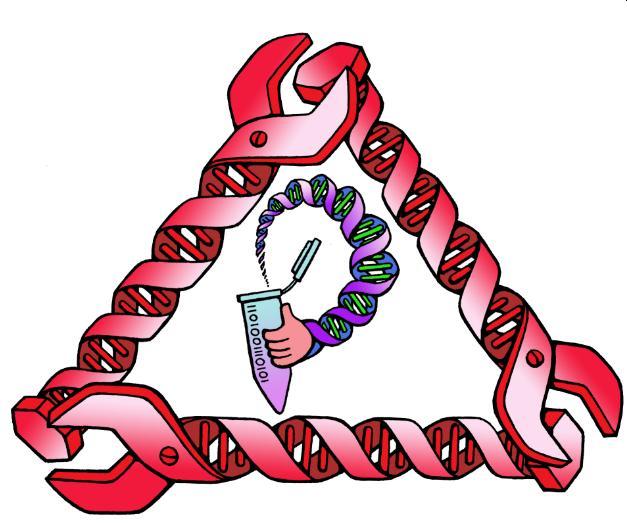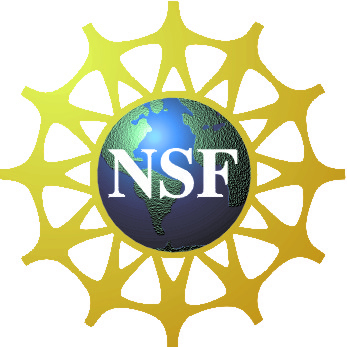DNA 17
17th International Conference on
DNA Computing and Molecular Programming
California Institute of Technology
Beckman Institute
Pasadena, California, USA
September 19 - 23, 2011
17th International Conference on
DNA Computing and Molecular Programming
California Institute of Technology
Beckman Institute
Pasadena, California, USA
September 19 - 23, 2011
See the call for papers for a description of each track.
Track A
- An Improved DNA-Sticker Addition Algorithm and Its Application to Logarithmic Arithmetic.
Mark Arnold. - Graph-theoretic formalization of hybridization in DNA sticker complexes.
Robert Brijder, Joris Gillis and Jan Van Den Bussche. - Localized Hybridization Circuits.
Harish Chandran, Nikhil Gopalkrishnan and John Reif. - Less Haste, Less Waste: On Recycling and its Limits in Strand Displacement Systems.
Anne Condon, Alan Hu, Jan Manuch and Chris Thachuk. - One-Dimensional Staged Self-Assembly.
Erik D. Demaine, Sarah Eisenstat, Mashhood Ishaque and Andrew Winslow. - Computing maximal Kleene closures that are embeddable in a given constrained DNA language.
Stavros Konstantinidis and Nicolae Santean. - Modelling, simulating and verifying Turing-powerful strand displacement systems.
Matthew R. Lakin and Andrew Phillips. - Synthesizing Small and Reliable Tile Sets for Patterned DNA Self-Assembly.
Tuomo Lempiäinen, Eugen Czeizler and Pekka Orponen. - Multivalent Random Walkers -- A Model for Deoxyribozyme Walkers.
Mark Olah and Darko Stefanovic. - Exact Shapes and Turing Universality at Temperature 1 with a Single Negative Glue.
Matthew Patitz, Robert Schweller and Scott Summers. - Autonomous resolution based on DNA strand displacement.
Inaki Sainz De Murieta, Alfonso Rodriguez-Paton and Petr Sosik. - Multiple Molecular Spiders With a Single Localized Source -- the One-Dimensional Case.
Oleg Semenov, Mark Olah and Darko Stefanovic.
Track B
- Associative toehold activation: Expanding the architecture of DNA circuits with a small structural motif.
Xi Chen. - Nucleic Acid Logic Gates Made From Nicked Double-Stranded DNA.
Yuan-Jyue Chen, Cezanne Camacho and Georg Seelig. - Amorphous Computation with a DNA-based Edge Detector.
Andrew Ellington, Xi Chen, Peter Allen and Steven Chirieleison. - Theoretical Model of Substrate-Assisted Self-Assembly of DNA motif.
Shogo Hamada and Satoshi Murata. - Programmable DNA-Linked Nanoparticle Building Blocks to Self-Assemble Nanostructures with Arbitrary, Anisotropic Shapes in All Dimensions.
Jin-Woo Kim, Jeong-Hwan Kim and Russell Deaton. - Nanomechanical DNA Origami Devices as Single-Molecular Visual Detectors for Various Chemical/Biochemical Targets.
Akinori Kuzuya, Sakai Yusuke, Takahiro Yamazaki and Makoto Komiyama. - A toolbox to build time-responsive in vitro DNA networks.
Kevin Montagne, Raphaël Plasson, Adrien Padirac, Teruo Fujii and Yannick Rondelez. - A Cell-free Expression Toolbox: from elementary gene circuits to synthetic bacteriophages.
Vincent Noireaux and Jonghyeon Shin. - Hybridization Kinetics of Higher-Order DNA Assemblies.
Andre Vidal Pinheiro, Jeanette Nangreave, Hao Yan and Yan Liu. - Nucleic acid sequence design via efficient ensemble defect optimization.
Brian Wolfe, Joseph Zadeh, Robert Dirks, Conrad Steenberg and Niles Pierce. - Optimizing Nucleic Acid Hybridization Specificity.
David Zhang, Sherry Xi Chen and Peng Yin.


